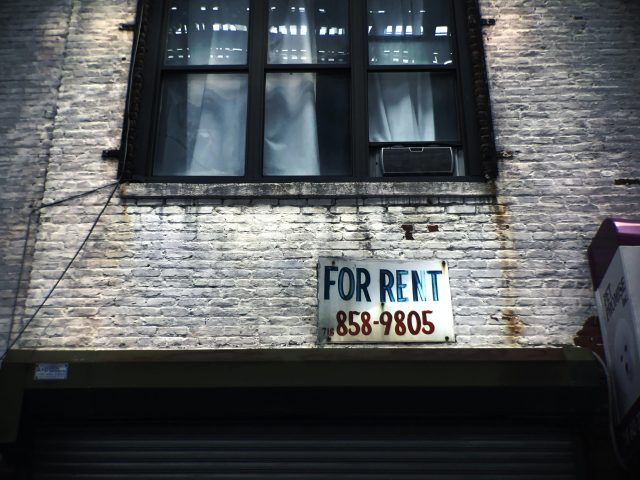In the age of digital convenience, the world has become a smaller place, with travelers no longer bound by the constraints of traditional accommodation. Short-term rental platforms like Airbnb and Vrbo have emerged as titans of the hospitality industry, promising unique experiences and home-like comforts in distant lands. Yet, as these platforms continue to proliferate, they leave a trail of questions in their wake. Are they merely facilitators of adventure and cultural exchange, or do they harbor the potential to unravel the very fabric of the communities they touch? This article delves into the multifaceted impact of short-term rentals, exploring their role as both catalysts for economic opportunity and potential harbingers of community disruption. Join us as we navigate the intricate landscape where innovation meets tradition, and discover whether these modern conveniences are, in fact, the unseen architects of local community erosion.
Impact on Housing Affordability and Availability
The emergence of short-term rental platforms has undoubtedly reshaped the landscape of housing markets across the globe. On one hand, these platforms offer property owners a lucrative opportunity to capitalize on the tourism industry by renting out their spaces to travelers. However, this has led to a significant reduction in housing availability for long-term residents, especially in popular tourist destinations. As properties are increasingly repurposed for short-term rentals, the supply of long-term rental housing dwindles, driving up prices and making it challenging for local residents to find affordable housing.
- Increased Competition: The allure of higher profits from short-term rentals often compels landlords to prioritize temporary visitors over long-term tenants, reducing the pool of available rental properties.
- Inflated Property Values: The potential for substantial income from short-term rentals can lead to inflated property prices, making it difficult for first-time buyers to enter the market.
- Community Displacement: As housing becomes less affordable, long-standing residents may be forced to relocate, leading to the erosion of community ties and cultural heritage.
Cultural Shifts and Community Dynamics
In recent years, the rise of short-term rental platforms has led to significant transformations in urban landscapes, challenging traditional notions of community and neighborhood identity. These platforms have not only altered the way people travel but have also instigated a series of cultural shifts within local communities. The influx of transient visitors, often seeking an authentic local experience, can lead to a dynamic yet volatile mix of cultures and lifestyles. This can foster a vibrant cultural exchange but also raises questions about the sustainability of such transformations.
- Community Fragmentation: Long-term residents may feel a sense of alienation as familiar faces are replaced by a rotating cast of short-term visitors.
- Economic Displacement: As property values rise, locals may find themselves priced out of their own neighborhoods, leading to economic disparities.
- Cultural Erosion: The unique cultural identity of a neighborhood might dilute, with local traditions and businesses struggling to maintain relevance.
While the allure of economic opportunities is undeniable, the challenge lies in finding a balance that respects both the needs of the community and the demand for short-term accommodations. Engaging in meaningful dialogues and implementing community-focused policies could be pivotal in navigating these complex dynamics.

Economic Benefits Versus Social Costs
While short-term rental platforms offer a significant economic boost, generating revenue for property owners and local governments through tourism, the social costs are increasingly hard to ignore. Communities often face rising property values and rental rates, making it difficult for long-term residents to afford living in their own neighborhoods. This phenomenon, sometimes referred to as ‘touristification,’ leads to the displacement of local communities and alters the social fabric of cities.
Consider the following impacts on community dynamics:
- Loss of Community Cohesion: Frequent turnover of short-term guests can disrupt the sense of belonging and stability among permanent residents.
- Strain on Local Infrastructure: Increased foot traffic and tourism can place additional pressure on local services, such as waste management and public transportation.
- Noise and Security Concerns: With properties constantly changing hands, neighborhoods may experience heightened levels of noise and security issues, affecting the quality of life for residents.
Balancing these economic benefits with the social costs requires thoughtful regulation and community engagement to ensure that short-term rental platforms enhance rather than undermine the local way of life.

Balancing Regulation and Innovation for Sustainable Growth
In the rapidly evolving landscape of the sharing economy, short-term rental platforms have emerged as both a boon and a bane for local communities. Innovation in this sector has unlocked unprecedented economic opportunities, providing homeowners with additional income streams and offering travelers affordable lodging alternatives. However, the absence of comprehensive regulations can sometimes result in a clash with community interests, leading to challenges that demand a delicate balancing act.
- Economic Disparity: While these platforms can boost local economies, they may also exacerbate housing affordability issues by converting long-term rentals into short-term stays.
- Community Cohesion: Frequent turnover of temporary guests can disrupt the fabric of neighborhoods, impacting the sense of community and stability.
- Environmental Concerns: Increased tourism facilitated by these platforms may strain local resources and infrastructure, challenging sustainability efforts.
To foster sustainable growth, it is crucial to develop balanced policies that encourage innovation while safeguarding community well-being. By integrating thoughtful regulations that address these multifaceted challenges, cities can nurture an ecosystem where both innovation and community interests coexist harmoniously.
To Conclude
As the sun sets on the bustling world of short-term rentals, the question remains: are these platforms harbingers of community collapse or catalysts for economic opportunity? While some argue that they erode the fabric of local neighborhoods, turning vibrant streets into transient hotels, others contend they breathe new life into stagnant economies, offering homeowners a chance to share in the prosperity of tourism. The truth likely lies somewhere in between, a complex tapestry woven from the threads of both disruption and innovation. As communities worldwide grapple with this evolving landscape, the challenge will be to strike a balance that preserves the essence of local life while embracing the inevitable winds of change. it may not be about choosing sides, but rather about crafting a future where both community and commerce can coexist harmoniously.





























